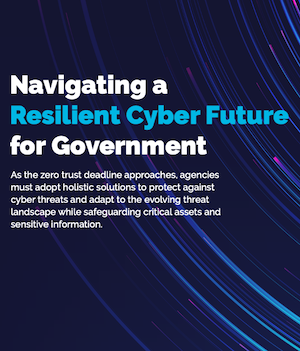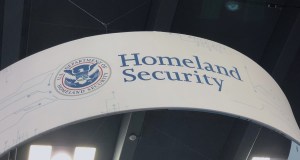- Sponsored
- Insights
Meeting zero-trust mandates with strategic partnerships

Zero trust has evolved from a buzzword to dominating critical discussions around security in both public and private sectors for several years now. In the government, it’s taken center stage as a top priority, moving from concept to reality—especially with the September 2024 deadline looming for civilian agencies.
With mandates and policies issued by the Cybersecurity and Infrastructure Security Agency, the National Institute of Standards and Technology, the National Security Agency, and the Office of Management and Budget, the urgency to work with partners to embrace zero-trust principles now cannot be overstated, says a new report.

The report, “Navigating a resilient cyber future for government,” emphasizes that it is more important than ever for agencies to adopt holistic solutions to protect against the evolving threat landscape while safeguarding critical assets and sensitive information.
At the same time, Peter Romness, cybersecurity principal for Cisco, argues why it’s critical for the government to work with strategic partners that can meet agencies wherever they are in their zero-trust implementation journey — regardless of what security solutions they already have in place — leveraging existing investments and aligning with federal zero-trust standards without necessarily needing a complete overhaul of their systems.
By leveraging these partnerships, agencies gain access to a diverse ecosystem of security tools, technologies and expertise—ensuring a more rounded and practical approach to cybersecurity.
The report also highlights the work agencies have taken to accelerate their efforts to meet federal zero trust mandates, including initiatives at the Department of Health and Human Services, the Department of Education, and the Office of Personnel Management. The lesson from these and other agencies is that “zero trust is not a one-size-fits-all process,” the report says.
The report also dives into the capabilities of threat intelligence platforms available to agencies, such as Cisco Talos. By integrating telemetry data from customer networks and various third-party tools, Talos offers a comprehensive overview of network activities. Moreover, it features automated response mechanisms that speed up and simplify the mitigation process. This way, potential attacks can be identified, prioritized, and remediated before they lead to a major impact.
Combined with the capabilities of platforms that provide a comprehensive, more holistic view of activity on agency networks, and devices operating at the edge of those networks, agencies will be better positioned to navigate the shifting landscape of cybersecurity, the report says.
Read more about navigating a resilient cyber future for government.
This article was produced by Scoop News Group, for FedScoop and CyberScoop and sponsored by Cisco.





